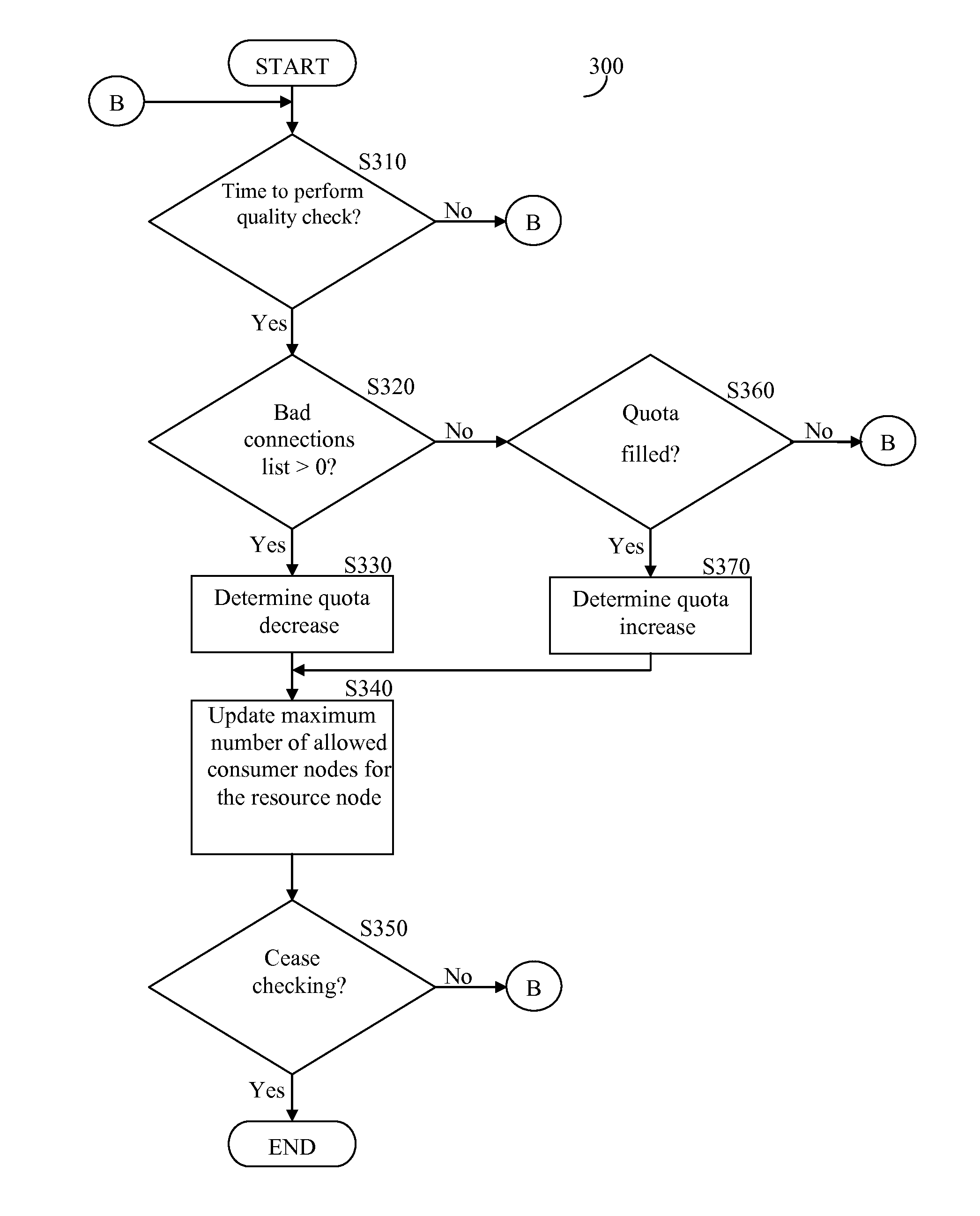Adaptive data rate streaming in a peer-to-peer network delivering video content
a peer-to-peer network and data rate technology, applied in the field of adaptive streaming data rate in the peer-to-peer network delivering timing sensitive content, can solve the problems of real-time streaming systems failing to fully utilize the network resources, and real-time streaming systems reducing the bandwidth and storage space required for the electronic distribution of multimedia data. , to achieve the effect of increasing bit-rate consumption, increasing bit-rate consumption,
- Summary
- Abstract
- Description
- Claims
- Application Information
AI Technical Summary
Benefits of technology
Problems solved by technology
Method used
Image
Examples
Embodiment Construction
[0023]It is important to note that the embodiments disclosed by the invention are only examples of the many advantageous uses of the innovative teachings herein. In general, statements made in the specification of the present application do not necessarily limit any of the various claimed inventions. Moreover, some statements may apply to some inventive features but not to others. In general, unless otherwise indicated, singular elements may be in plural and vice versa with no loss of generality. In the drawings, like numerals refer to like parts through several views.
[0024]FIG. 1 shows a non-limiting and exemplary block diagram of a P2P network 100 for real-time distribution of real-time content used to describe the certain embodiments of the invention. The P2P network 100 includes a plurality of nodes (peers) 120 and a broadcaster 130, all of which communicate with each other over a network 140, that can be a wired network, a wireless network, or any combination thereto, and using...
PUM
 Login to View More
Login to View More Abstract
Description
Claims
Application Information
 Login to View More
Login to View More - R&D
- Intellectual Property
- Life Sciences
- Materials
- Tech Scout
- Unparalleled Data Quality
- Higher Quality Content
- 60% Fewer Hallucinations
Browse by: Latest US Patents, China's latest patents, Technical Efficacy Thesaurus, Application Domain, Technology Topic, Popular Technical Reports.
© 2025 PatSnap. All rights reserved.Legal|Privacy policy|Modern Slavery Act Transparency Statement|Sitemap|About US| Contact US: help@patsnap.com



